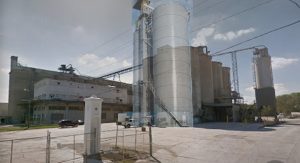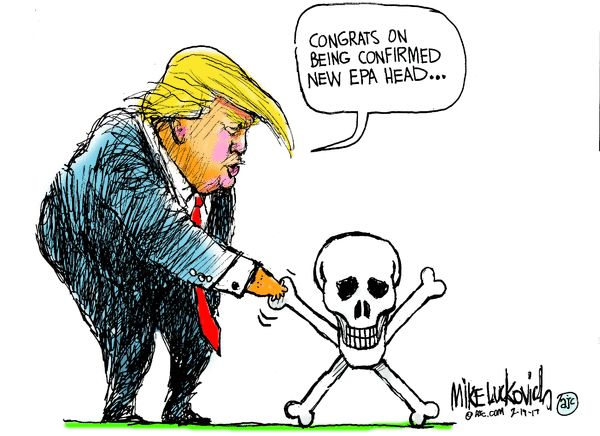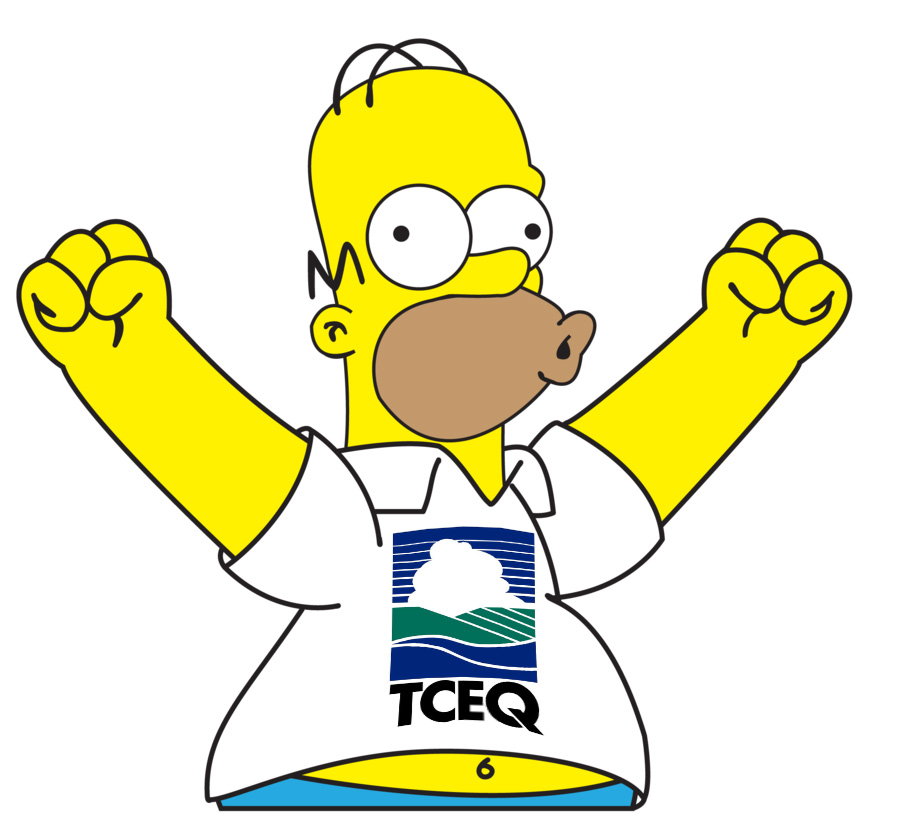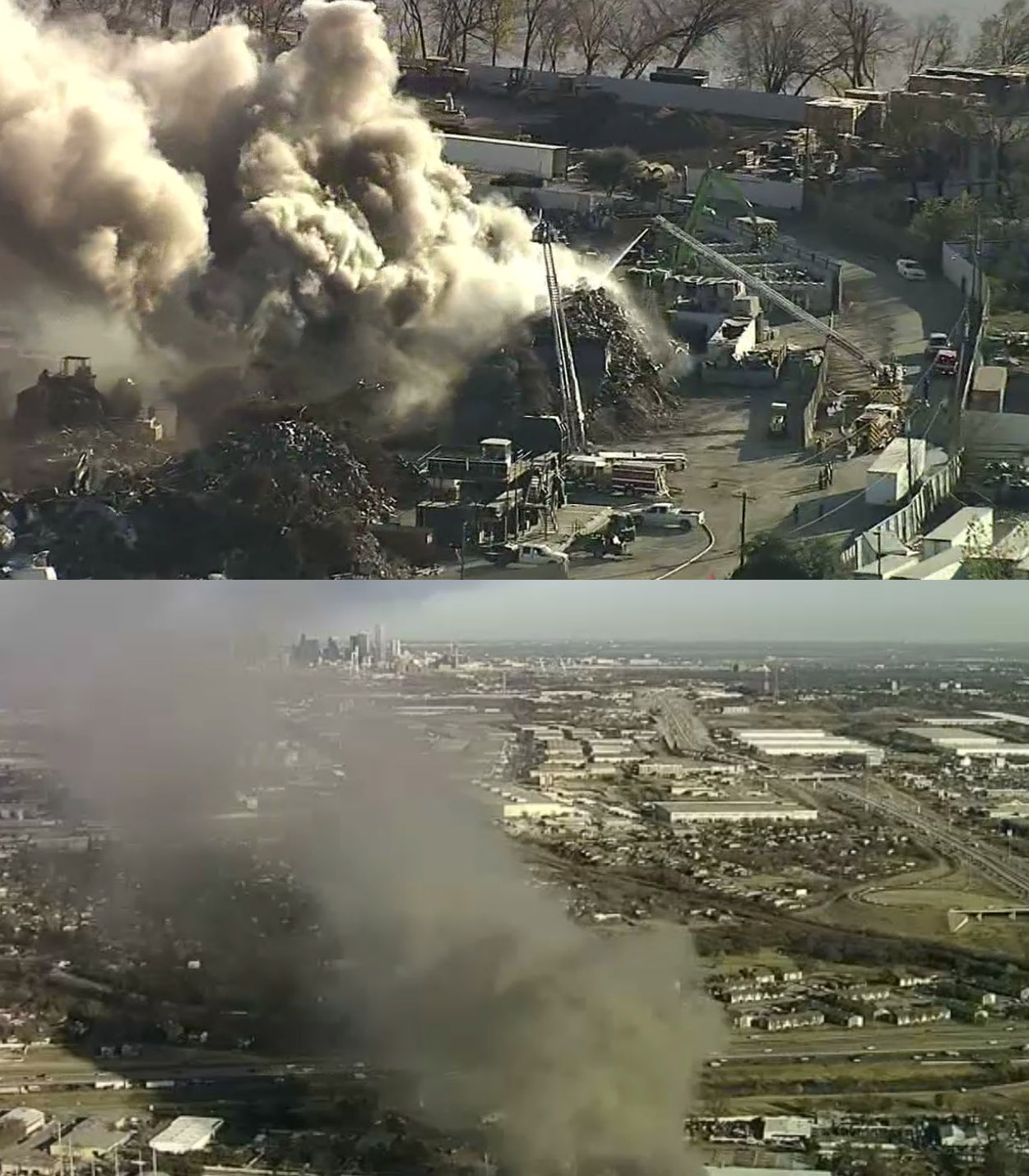Posts by jim
An Italian Multinational is Using West Dallas to Import Toxic Cement into North Texas
And BuzziUnicemUSA wants the City’s permission to build a new 170-foot tall silo to store it in
Just when you thought you had a handle on the environmental hazards plaguing West Dallas, up pops another out of left field.
Lead, sure. Asbestos, check. Benzene too. Arsenic, yes.
But you might not expect rail cars and silos full of finely-grained toxic cement – cement made by burning hazardous waste as “fuel” in a cement plant. Cement that still has the residues of that hazardous waste inside it. Residues like lead, and arsenic and Dioxins – the stuff in Agent Orange.That was one of the unpleasant surprises during a February 1st on-site meeting between neighborhood activists and the folks who own and operate the Buzzi cement terminal on Lone Star Drive between Commerce and Singleton to discuss the construction of a huge new silo at the facility.
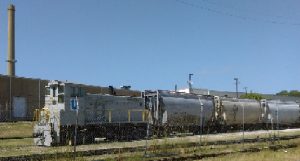 BuzziUnicemUSA is a huge Italian-based multinational. In the US, the Company operates 7 cement manufacturing plants and 29 other distribution terminals in the United States besides the one in West Dallas.
BuzziUnicemUSA is a huge Italian-based multinational. In the US, the Company operates 7 cement manufacturing plants and 29 other distribution terminals in the United States besides the one in West Dallas.
On February 22nd, Buzzi is scheduled to come before the City of Dallas Board of Adjustment seeking a “height variance” that would allow it to build the new silo 17 stories tall – 60 feet further up than they can go now with current zoning restrictions.
With the exception of the abandoned but still-standing 1920’s garbage incinerator smokestack just a couple of blocks away on West Commerce, it would be the tallest structure in West Dallas.
The idea of yet another industrial eyesore in a neighborhood that has battled for over a century with such things was not well-received by the delegation of neighborhood residents. Nor was the news that the company didn’t have a Plan B for addressing their concerns.
But perhaps most surprising was the news that the company was importing cement from its hazardous waste burning kilns in Missouri and off-loading it in Dallas to be used in the construction boom here.
To know how offensive that might strike residents and local environmentalists, you have to know history. Lots and lots of history.
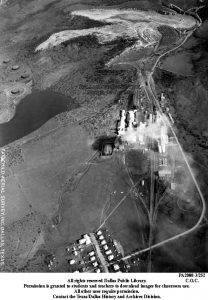
The Trinity Portland Cement Plant in West Dallas 1906-1984, Dallas Public Library
West Dallas was founded in part when a group of Galveston investors established the Trinity Portland Cement Company in 1906 and imported an entire Mexican village to build and run their cement kiln.
“Cement City” was established a couple of miles west of the then-Dallas city limits, and existed on the books up into the 1960’s. This was part of the White Establishment pattern of keeping those deemed “undesirable” – polluters and people – segregated from Dallas proper. Many West Dallas families can trace their beginnings in this country to these first cement plant workers.
Even after a growing Dallas swallowed Cement City, the West Dallas cement plant remained. In 1984, its owners announced plans to begin burning hazardous waste instead of oil or gas as a “fuel” for making its product.
But 1984 happened to be the year West Dallas residents’ fight against wholesale lead contamination from the RSR smelter was reaching its climax. They were forcing a complete closure (a complete clean-up would take much longer), and were in no mood to battle another source of toxic pollution.
At that time, the community was represented in Congress by U.S. Representative Martin Frost, a mid-cities Democrat. He was able to draft and successfully pass what became known as “The Frost Amendment” which prohibited the burning of hazardous waste in cement kilns located in any U.S. city with 500,000 or more residents. Welding the law’s language as carefully as a surgeon’s knife, Dallas was the only city affected.
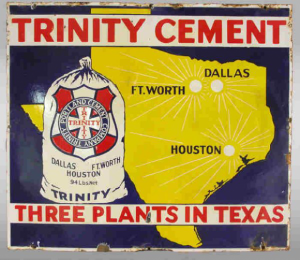 Without the prospect of becoming a hazardous waste incinerator and being able to charge for waste “fuel” instead of having to pay for gas or coal, the West Dallas cement plant closed shortly after Frost’s amendment was passed.
Without the prospect of becoming a hazardous waste incinerator and being able to charge for waste “fuel” instead of having to pay for gas or coal, the West Dallas cement plant closed shortly after Frost’s amendment was passed.
Two years later the idea would surface again in near-by Midlothian, the self-proclaimed “Cement Capitol of Texas” with three cement plants and only three thousand residents. This is Downwinders at Risk’s creation story. We’re here because of those Midlothian waste-burning cement plants and the multi-decade campaign citizens fought to end it.
Part of that ending was the successful “Green Cement Campaign” which persuaded local governments to quit buying and using the cement from the dirtier waste-burners in favor of those cement plants using conventional fuels. Dallas was the first of a dozen cities and counties to pass a Green Cement procurement ordinance. Fort Worth, Plano, and Arlington passed similar ordinances. They were the reason why TXI decided to stop burning hazardous waste in 2008. For the first time in over 20 years, no toxic cement was being made or used in North Texas. Most locals probably thought they would never have to deal with the subject again.
Which makes the news of Buzzi’s importing of cement from Missouri waste-burning kilns very disappointing indeed. Apparently the company is shipping tons and tons of the stuff into Dallas for Ready-Mix to use in a host of construction projects, including many in Frisco. It’s quite possible the the new Cowboys facility there is being built with cement containing the residues of hazardous wastes, including lead.
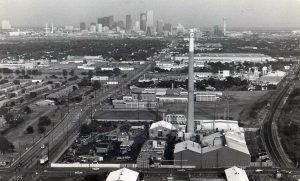
The RSR lead smelter in Dallas, 1981
And that’s problematic because much like West Dallas, Frisco has had a long toxic dance with lead. The ancient and dilapidated Exide lead smelter was shut down in 2012 because it was violating lead air pollution standards. It’s not operating now, but the land the smelter owned is still severely contaminated and at the center of a bitter legal battle between the City and Exide. How ironic is it for Frisco to have recently rid itself of a lead smelter only to have lead waste imported into the city and disposed of under the guise of cement?
How ironic to have Dallas and Plano help stop the manufacture and use of local toxic cement, only to provide a commercial market for Missouri’s?
And for West Dallas to get rid of one of the its first environmental injustices, stop the original waste-burning wanna-be in its tracks, and still find itself a major depot for toxic cement?
Residents who want to see West Dallas continue to overcome and redress its racist past should be at the Board of Adjustment hearing at City Hall on the 22nd. Call Trena Law @ (214)670-4206 to get details about time and speaking opportunities. Stay tuned.

How Do You Make Progress in the Trump Era? Two Words: Particulate Matter
Public Health
Economic Development
Transportation
Housing
Childhood Development and Education
Environmental Justice
Crime
In the same way lead exposure was linked to lower IQ in children and anti-social behavior like crime, PM Pollution is now being linked to learning disabilities and juvenile delinquency.
And in the same way public health mandated the removal of lead from gasoline and paint, many public policy measures are needed to help eliminate PM pollution exposure.
Many if not most of these are local in nature. They don’t need EPA or TCEQ approval.
__________
In California, buffer zones between new homes and freeways are under consideration because so many 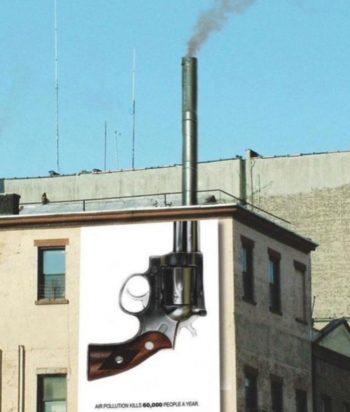 studies have shown children living next to freeways suffer significantly higher rates of Autism and learning disabilities.
studies have shown children living next to freeways suffer significantly higher rates of Autism and learning disabilities.
Some local governments, school districts, and public transit agencies, including DART are beginning to electrify their bus fleets to reduce exposure to PM pollution and save money. “No idling zones” around schools and are being enlarged.
In DFW, Downwinders is sponsoring a broad public health initiative aimed at identifying and reducing PM Pollution from all sources, called “No Safe Level.”
Just as PM pollution poses all kinds of adverse health effects it also provides lots of opportunities at the local level to make things better for your neighbors:
Safer homes and schools.
More sustainable public transit.
More equitable zoning.
Pollution controls.
Public Health protections in the neighborhoods that need them most.
We can make progress. But we need your help.

“NO SAFE LEVEL”
Particulate Matter
CAMPAIGN MEETING
SATURDAY, JANUARY 27th
2 – 4 PM
Hill Country Room
Meadows Conference Center
2900 Live Oak in Old East Dallas
Get the Basics on PM
Help Pick Campaign Targets and Create Strategies for Change
Your Hosts, Our No Safe Level Committee members:
Cresanda Allen
Shannon Gribble
Amanda Poland
Evelyn Mayo
Misti O’Quinn
FOLLOW-UP: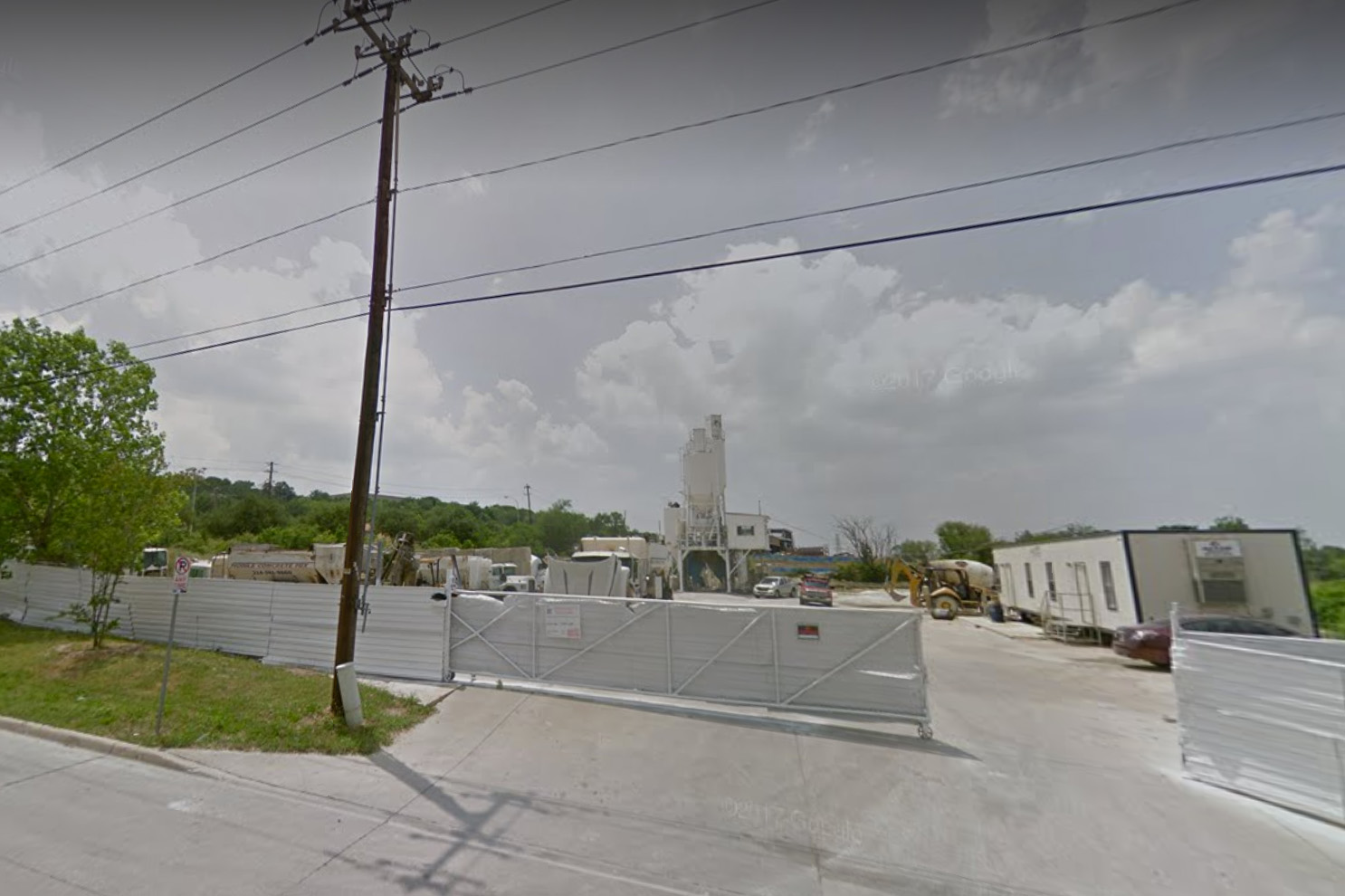 West Dallas residents won their fight to close the RamCrete batch plant at the January 10th Dallas City Council meeting. The vote was 14-1 with Council Member Rickey Callahan the lone outlier. However, The City’s Office of Environmental Quality didn’t distinguish itself when a spokesperson reassured Callahan that any facility meeting TCEQ standard exemption permit levels of pollution “could not be causing a problem.”
West Dallas residents won their fight to close the RamCrete batch plant at the January 10th Dallas City Council meeting. The vote was 14-1 with Council Member Rickey Callahan the lone outlier. However, The City’s Office of Environmental Quality didn’t distinguish itself when a spokesperson reassured Callahan that any facility meeting TCEQ standard exemption permit levels of pollution “could not be causing a problem.”
Incompetence or Negligence? It Doesn’t Matter: Local Air Pollution Catastrophes on Oct 19th & Dec 11th Show Why DFW Must Have Its Own 21st Century Independent Air Quality Monitoring Network
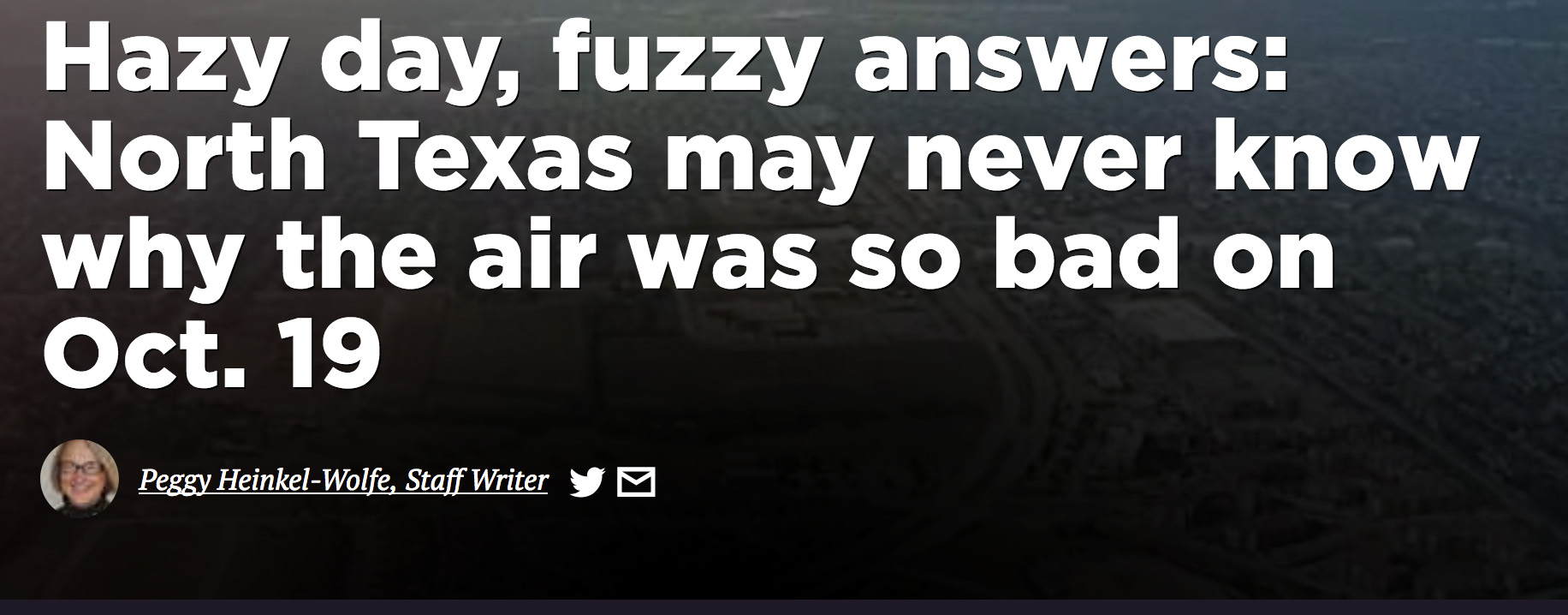
Q: What caused PM and Ozone pollution to spike so high and fast on Oct 19th that health alerts had to be issued from Dallas to Denton?
A: The Texas Commission on Environmental Quality couldn’t care less.
That’s the take-away from Peggy Heinkel-Wolfe’s story that appeared over the weekend in the Denton Record Chronicle.
You may remember we reported on the mystery shortly after it happened and tracked down all the local and non-local suspects cited by officials in the media that day. None of them turned out to be the cause of an air pollution incident that was so potent it raised the entire regional ozone average a whole part per billion and forced PM levels into the triple digits.
Heinkel-Wolfe goes one step further and makes inquires from the TCEQ itself. And the run around she gets is Catch-22 material.
TCEQ says they can’t investigate an air pollution problem unless there’s a known cause. But if there’s a known cause, what you’ve got there really isn’t an investigation any more, it’s an enforcement action, isn’t it?
This article may be the single most compelling case for why DFW needs its own locally-controlled air quality monitoring network. Find it here.
Q: Where are the results of the air samples the Dallas Fire Department supposedly took when a West Dallas Recycling was sending large plumes of black smoke over the surrounding and downwind neighborhoods on December 11th?
A: Nobody seems to know.
A huge pile of metal scrap burned and smoldered for over 24 hours at Sunshine Recycling on Ruder Street in West Dallas on December 11th. Thick plumes of smoke streaked the sky for half a day and into the night.
According to WFAA-TV, a Fire Department Hazardous Materials response team was on site because there were hazardous materials on site – although exactly what those were, or are, remain nameless.
That evening the Dallas City Councilman who represents West Dallas, Omar Narvaez, posted on his FaceBook page that “The Fire Dept has conducted testing and there is no hazardous materials burning.”
Really? Because when a scrap yard like that catches fire, you can bet there’s “hazardous materials” burning whether it’s officially noted or not. Plastic tubing and hoses become Dioxin-generating embers. Used oil has all kinds of metals in it that attach themselves to the smoke particles. Vinyl can generate very toxic fumes. Just the PM pollution from the smoke alone was enough to trigger all kinds of harmful health impacts. Very likely the entire pile of metal waste that was burning that night was indeed “hazardous.”
But OK, you say you took tests and they showed nothing out of the ordinary? Let’s see them. In December Downwinders submitted a Texas Open Records Act request to the City of Dallas for the results of those tests. We’re still waiting. As of today, and despite three phone calls to the Open Records Division of the City Secretary’s office, we still don’t have what it’s supposed to take no more than 10 business days to get. It’s been a month and counting. We’re trying to get some legal help to extract the information. Stay tuned.
For $500 a piece, we can install a dense grid of PM monitors across the region, tie them all together and present the information to the public in a transparent accessible way. It can be locally-controlled, directed by scientists, and independent of political influence.
It would automatically track plumes in real time, not an hour ago. It would give you reliable and specific levels of pollution rather than vague reassurances. It would transfer the power from officialdom to citizenry.
That’s the new Network we’re building. Stay tuned.
Thanks Governor: An MLK Day Special Posting
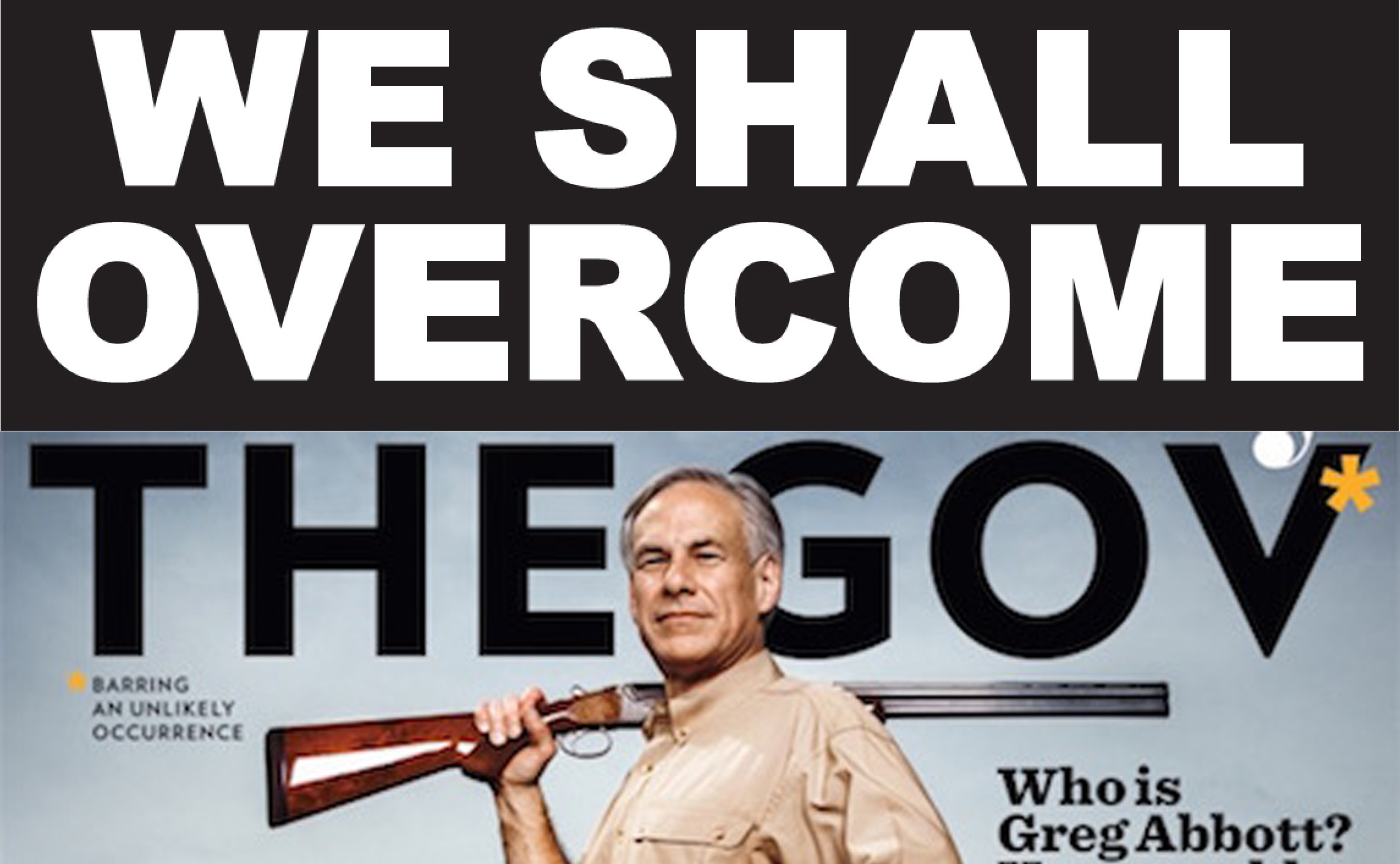
It was a night that might’ve even made atheists Believe.
Answering the impromptu call to action, the weary had come to sit in the pews at the community church. At issue this time was the appearance of their white Governor cynically using elements of the local minority establishment to deflect attention from his racist record. He was coming in three days. Something must be done.
There was the United Front of black clergy in dark suits, the surprisingly feisty local NAACP leadership, the Young Turks, Latino union sympathizers, and white supporters, all making their own personal calculations about bail money and jobs and what lines would be crossed for what reasons when the protest happened.
Only the details of the arrest protocol were yet to be determined in last-minute negotiations with the city and Police Department. Girding themselves, the evening was a gathering of determined souls who seemed to need each other’s company at least as much as they needed legal aid. There was going to be some preaching, some singing, and some praying. Lots of praying.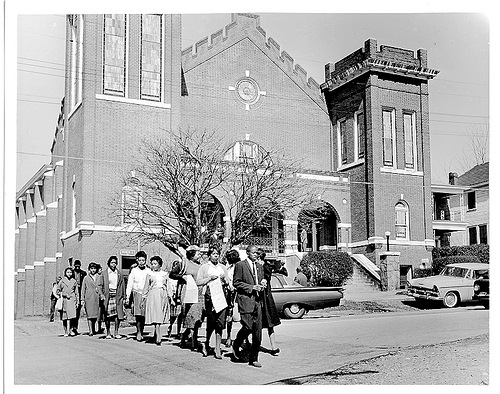
Inside, the gathering was stalwart and righteous. Outside, howling winds were nature’s metaphor for the political storm created by the decision to confront. It had not only angered the usual suspects but split the black community as well. Some black groups and elected officials, as well as a host of murkey-motivated whites (and of course the local daily paper) didn’t see anything wrong at all with the Governor’s visit. This made tonight’s meeting all that more controversial and conspiratorial-like. They were all out on a wind-battered limb.
But just as schedules were being cleared and cash collected, there was a trickle of whispers. Whispers that made people quietly exalt “Hallelujah.” Whispers that lifted the psychic load from faces like sandbags being thrown off a hot air balloon. Whispers full of the Good News.
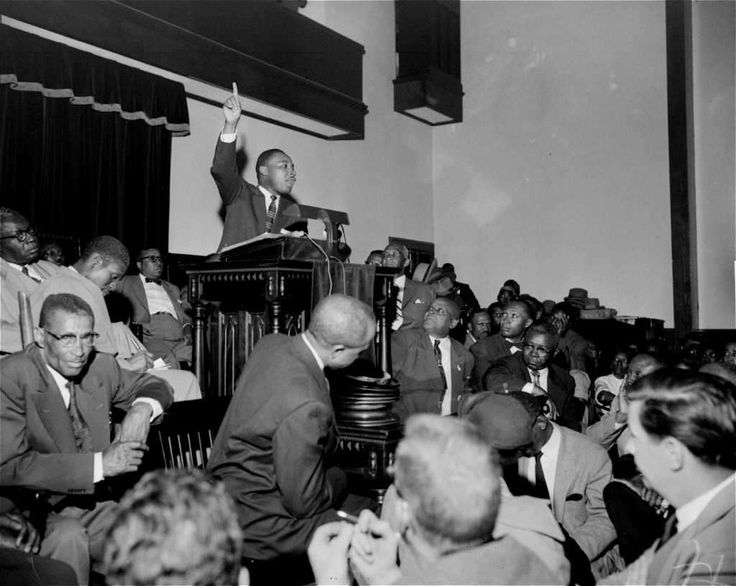
Finally the words were uttered out loud from the pulpit. There would be no protest because there would be nothing to protest. The governor was not coming. Fearing the possible negative publicity of a major civil rights demonstration in their town, local officials had found a blunt if face-saving way to avoid the confrontation. They had canceled the entire event. Applause and louder “Hallelujahs” and “Amens” filled the Sanctuary. The Governor’s office had no comment. Outside the sun came out at dusk.
If you squinted, you could almost see it in grainy black and white.
But it was 2018.
And it wasn’t Montgomery or Jackson. It was Arlington.
For one shining moment last week a part of the local civil rights movement found the intestinal fortitude to save the legacy of the entire civil rights movement. In doing so it illuminated the reason why all of us need a deeper appreciation of that legacy.
When a new MLK Day parade for Arlington was announced with Texas Governor Greg Abbott as its honorary Grand Marshal shortly after New Year’s, the producers unleashed many of the same debates and quarrels stirred-up by almost every protest King was ever in.
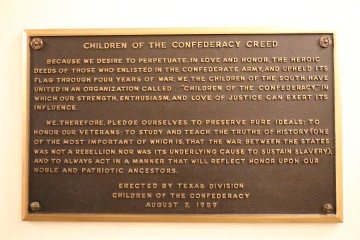
The plaque that STILL hangs on the Texas State capitol wall and that Gov. Abbott STILL refuses to recommend removing
In raising King to secular Sainthood, people forget how controversial he was and still should be. We forget how many times he was called a Communist or a dupe of the Communists by mainstream commentators and government officials. At the very least he was said to be “misguided” and “impatient.” We forget the FBI secretly tried to sabotage his work and family. Many of us don’t know or remember his house being bombed while he and his family slept in it. We forget how many times he went to jail to make a small but important point or spotlight a local campaign. We forget how many black and white clergy warned against him and his brand of radical Christianity.
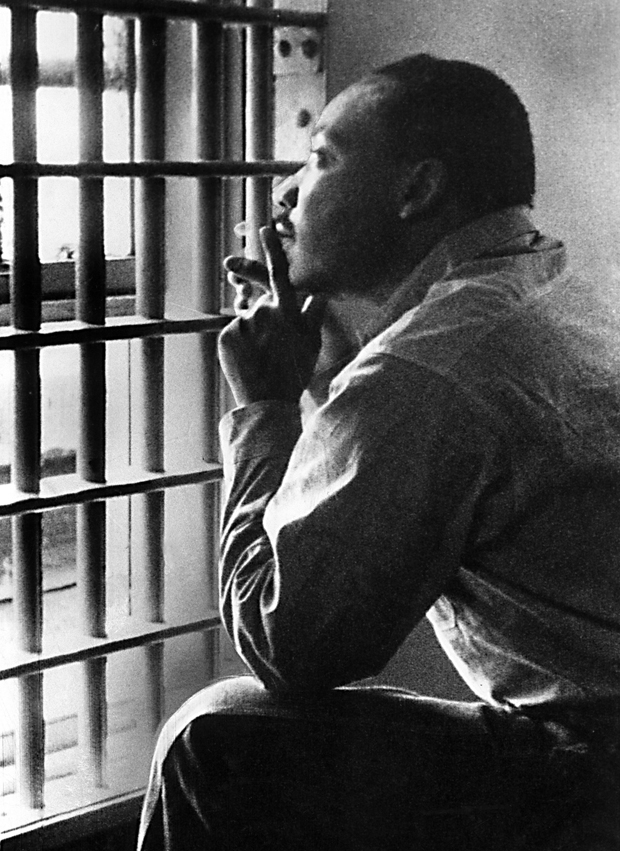
We also forget King was about confrontation as much as reconciliation. The White Establishment would not reconcile themselves to black equality under the law until they were forced to confront the impacts to their communities up close and personal. Non violent direct action was an effective tool to get whites to the table and begin to win concessions and change the system. Reconciliation came only after negotiations as equals took place and progress toward equality was produced. Sometimes that meant integrating interstate transportation. Sometimes it meant hiring more black clerks at downtown department stores. But it always meant some progress was achieved, the system was changed somehow.
Those who didn’t see any problem with Governor Abbott heading up an MLK parade throw away half of King’s approach and go right to an unrequited act of reconciliation without any meaningful or even symbolic concessions from a man who’s made a career out of singling out The Other.
For them, entry to MLK’s legacy is free of charge to the Governor just because of his title. He doesn’t have to earn his way there. He doesn’t have to concede a policy. He doesn’t even have to express remorse or even request a reconciliation. It showed up in his driveway unannounced in a Camry.
That was too cheap a price for those in the church and their supporters. They argued even MLK would have at least made Governor Abbott remove the pro-slavery “Children of the Confederacy Creed” plaque on the state capitol wall before allowing to ride unencumbered in a parade saluting human rights.
One of the most inane comments about the whole affair came from the Governor’s press secretary who regretted that the MLK Day parade her boss, the Governor of Texas up for reelection this year, was riding in was now being “politicized.” Yes, the Morning News tsked tsked in its own circa-1964 way, how unfortunate it was to see an event honoring a leader who was assassinated for his political beliefs devolve into something so unseemly as politics.

Arlington NAACP President Lisa Simmons. Rev. Kennedy Jones is the first from the left.
Rev. Kennedy Jones didn’t agree. He’s the pastor of the Greater Community Missionary Baptist Church in Arlington, Thursday night’s ground zero for the anti-Abbott forces. He was born in Lowndes County, Alabama, known during King’s lifetime as “Bloody Lowndes” for its white residents’ violent resistance to integration. His father marched over the Edmund Pettus Bridge in Selma and he watched from his shoulders when King finally made it to Montgomery. Is it political when you get beaten or killed because you want to vote?
To Rev. Jones, and his father before him, and his father before that, it was. And nothing since those bloody days has convinced him there’s any daylight between politics and civil rights progress. Inviting someone to be Grand Marshal of a King parade who brags about Voter ID laws with the goal of disenfranchising black and brown people was rubbing salt in those wounds. Nobody asked, but if there are 2019 MLK parades looking for Grand Marshals, Rev Jones would be a heck of a good one.
 Taking a stand with him was the Arlington NAACP chapter he belonged to, which is another hero of this showdown. It was their prior relationship with the City, as well as their status as community leaders that made the threat of protest credible and serious. If the oldest civil rights group in town had not stepped up and said “not in our name” the rest of the protesters would have likely floundered. The Fort Worth NAACP had no comment on Abbott’s parade ride. The Dallas NAACP had no comment. And King’s own group, the Southern Christian Leadership Council, was planning on marching in the parade with the Governor, not marching against it.
Taking a stand with him was the Arlington NAACP chapter he belonged to, which is another hero of this showdown. It was their prior relationship with the City, as well as their status as community leaders that made the threat of protest credible and serious. If the oldest civil rights group in town had not stepped up and said “not in our name” the rest of the protesters would have likely floundered. The Fort Worth NAACP had no comment on Abbott’s parade ride. The Dallas NAACP had no comment. And King’s own group, the Southern Christian Leadership Council, was planning on marching in the parade with the Governor, not marching against it.
Let’s face it, in North Texas you’re just not used to seeing the NAACP get out in front of a controversy like this. Doing so took a lot of gumption, personified by Arlington NAACP president Alisa Simmons who used every ounce of her professional PR skills to deliver a dignified but forceful reaction to the parade cancellation. Pressure on the group to fold must have grown to hypertension levels. But it never backed down. It was another little group that did.
There have been recent local “resist” protests that attracted more people and were better organized but maybe not as effective in so short amount of time. Nor quite as vaguely reminiscent of the old liberal alliance that powered so many reforms in the late 1950’s and early 60’s. It’s not an overstatement to observe that last week the DFW civil rights movement had a spontaneous and genuine revival so heartfelt it kept an incumbent Governor from committing an act of civic desecration he desperately wanted to commit in friendly “red” Tarrant County. That’s effective resistance. And its lessons gave us one of the most educational and memorable MLK weeks ever.
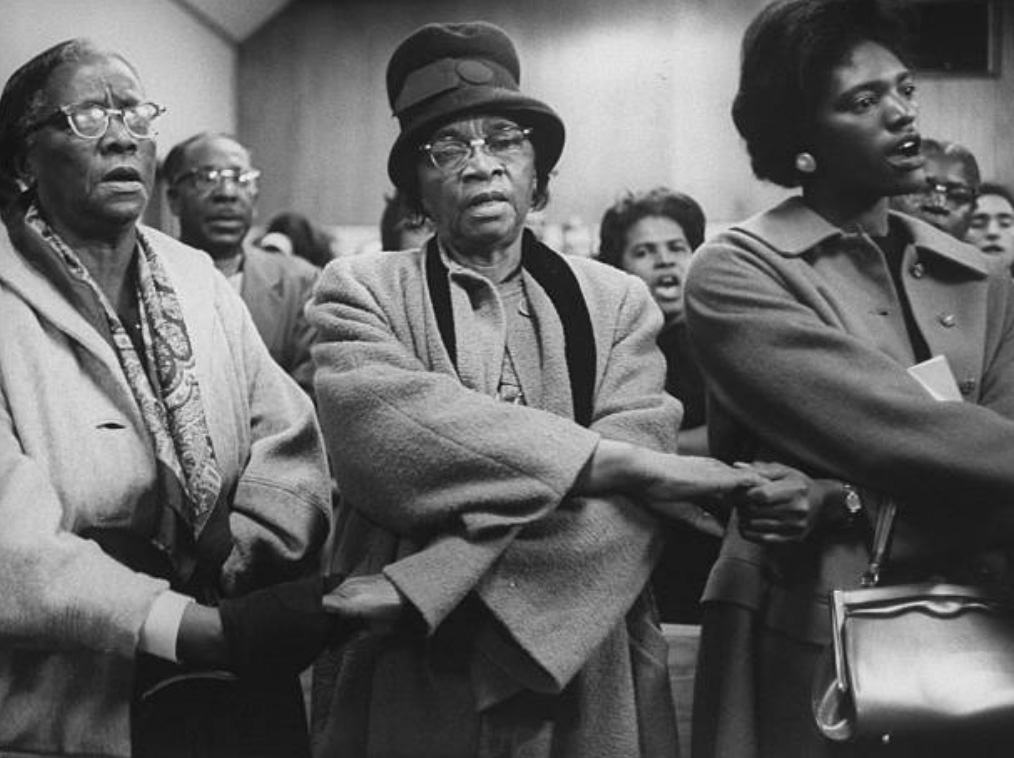 Chances are Abbott will never be asked to ride in another MLK parade and the producers of this one will not be showing up in Arlington with another scheme. But if there was any question as to the response from those assembled in the church, it was answered by the closing Hymm. One picked by Rev. Jones himself.
Chances are Abbott will never be asked to ride in another MLK parade and the producers of this one will not be showing up in Arlington with another scheme. But if there was any question as to the response from those assembled in the church, it was answered by the closing Hymm. One picked by Rev. Jones himself.
Enjoy the marches. By all means attend the demonstrations. But you’ll be hard pressed to beat the spine-tingling, swear-you-can see-it force field generated by a group of successful true believers holding hands in a black church defiantly singing “Go and tell the Governor: we shall not be moved.”
New Grant Gives Us a Campaign Budget for 2 Years
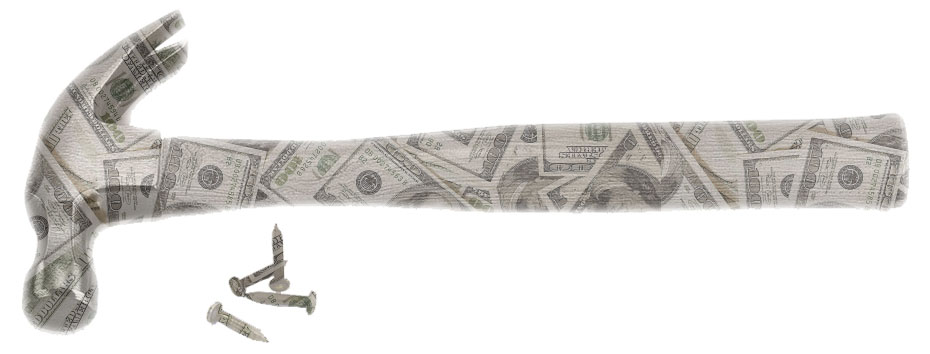 Downwinders at Risk is proud to announce we received a very generous $40,000 grant from the Dallas-based Simmons Sisters Fund in December to cover the costs of our “No Safe Level” PM pollution protection campaign for the next two years.
Downwinders at Risk is proud to announce we received a very generous $40,000 grant from the Dallas-based Simmons Sisters Fund in December to cover the costs of our “No Safe Level” PM pollution protection campaign for the next two years.
This money will be going to buy both portable and stationary PM pollution monitors, educational and outreach materials, including videos, websites and social media campaigns, new studies we need to advance the cause, and a host of other things we would not have even thought possible before the arrival of this grant. We can’t tell you how excited we are to have this kind of budget. We can really start to make a difference right out of the gate.
But we still need you. We need you to show-up at our monthly meetings and learn how you can plug into this campaign, which has the potential to reshape public policy in so many ways. We need you to invite us to your PTA, club, or church gatherings to present the information about PM that makes every audience gasp. And yes, we still need your donations – to pay for salaries of our one and half staffers, other projects, and special events like our Root and Branch Conference.
We just got a huge vote of confidence in our new campaign from the Simmons Sister Fund. Please consider giving your own as well. Thanks.
New Study Adds To PM Harms: Exposure Linked to Increases in Juvenile Delinquency
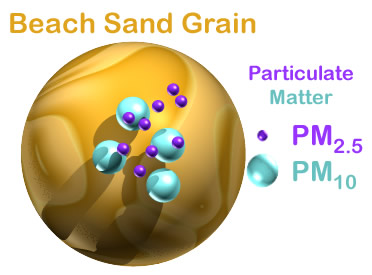
The first study to look at the effects of PM pollution exposure on the social behavior of children found that that the more bad air a child inhaled, the more likely they were to engage in delinquent activity.
Published in December’s Journal of Abnormal Child Psychology by researchers at UCLA, UC Irvine, and Orebro University in Sweden, “Longitudinal Analysis of Particulate Air Pollutants and Adolescent Delinquent Behavior in Southern California” is already a landmark study in the growing field of PM research. It further demonstrates the similarities between PM and the handful of other neurotoxins linked to delinquency – like lead.
While past studies have identified a range of neurological impacts associated with PM pollution, including Autism and Parkinson’s Disease, this is the first time it’s been linked specifically to anti-social behavior. According to the authors, cumulative exposures were found to result in developmental differences lagging as many as 3 to 4 years behind the norm.
Not surprisingly, African-American boys, and children who lived in neighborhoods with poorer air quality and less green space had both higher PM exposure levels and higher delinquency rates.
This is only the latest reason why Downwinders at Risk has identified PM as Air Pollution Enemy #1. There’s not another pollutant that’s been linked to so many different health harms – from lung cancer to strokes and heart attacks, to immune and reproductive system damage to a host of brain illnesses both profound and subtle.
All of these harms are caused by “normal” levels of exposure to PM. And that’s why that exposure level must come down.
West Dallas Batch Plant Vote THIS Wednesday, Dallas City Hall

The RamCrete Batch Plant at the corner of Marilla and Commerce in West Dallas has been so poorly run that last fall the Dallas City Planning Commission took the unusual step of overruling staff recommendations and voted to close the facility down: lock, stock and particulate matter.
RamCrete’s operators are appealing that shut-down decision to the full council Wednesday. Action was postponed from December based on a request from the company.
Historically, West Dallas has been used as a dumping ground for both industries and people the Dallas establishment didn’t want in their own backyards. Obsolete zoning allows all kinds of industrial activity to be sited too close to residential areas.
This specific batch plant is only a symptom of that zoning, but it presents a clear and present danger to West Dallas residents that can be stopped with this vote.
Downwinders at Risk’s “No Safe Level” Campaign to reduce Particulate Matter exposure has identified this council vote as an important first step in decreasing the emissions of PM in this neighborhood and West Dallas as a whole.
The public hearing on this permit denial is #51 on Items for Individual Consideration on the Council’s Wednesday’s agenda. Citizens will have 3 minutes or less to speak in favor of or against upholding the Planning Commission’s decision to yank the permit.
We’re sorry we can’t give you an exact time this will come up, but City Hall veterans know these things are unpredictable. You pretty much have to show up at 9 am and stay until they get to it.
If you can, please come join us for the first PM battle – and we hope victory – of 2018.
A Group That Shouldn’t Be Here…Still Is. Thanks.
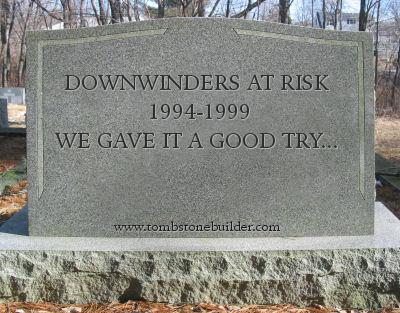 By all rights, there shouldn’t be a Downwinders at Risk around anymore.
By all rights, there shouldn’t be a Downwinders at Risk around anymore.
The life expectancy of a local grassroots group rising up to fight a bad permit is a couple of years if you’re lucky, twice that if you’re extremely lucky.
We’re beginning our 23rd year. Throughout that time, we’ve ridden our share of organizational roller coasters and still managed to disembark with our group intact.
When we lost our hazardous waste permit fight with TXI in 1999. When we fought our Green Cement battles. When we debated taking on lead smelters and gas drilling in addition to cement kilns. Those were tough times.
But this year was among the most disheartening and frustrating… and hopeful and exhilarating. On Inauguration Day, the program work of the last five years centering on DFW smog evaporated with the installation of a hostile EPA. We then lost 50% of our board between January and July through moves, illness, and exhaustion. We weren’t sure we were going to make it to the end of this ride.
But then things started to happen.
15 brave souls signed-up for an inauguration of our own as we began the College of Constructive Hell-Raising as an experiment in cross-movement, cross culture networking. By May’s graduation, there was a consensus it was a successful one and we recruited at least one board member from its alumni.
Our “Science and Socializing” events in June attracted new blood, including young scientists and researchers that wanted to help with 21st Century high-tech air quality monitoring.
We conceived a new campaign centered on Particulate Matter pollution, a pervasive and potent toxin linked to everything from early death to learning disabilities. A toxin we can reduce exposure to without the permission of the EPA or State of Texas. We believe this effort will take us places no DFW environmental group has ever gone before: highway and urban planning, transit and housing policy, as well as the familiar ground of environmental racism and citizen empowerment.
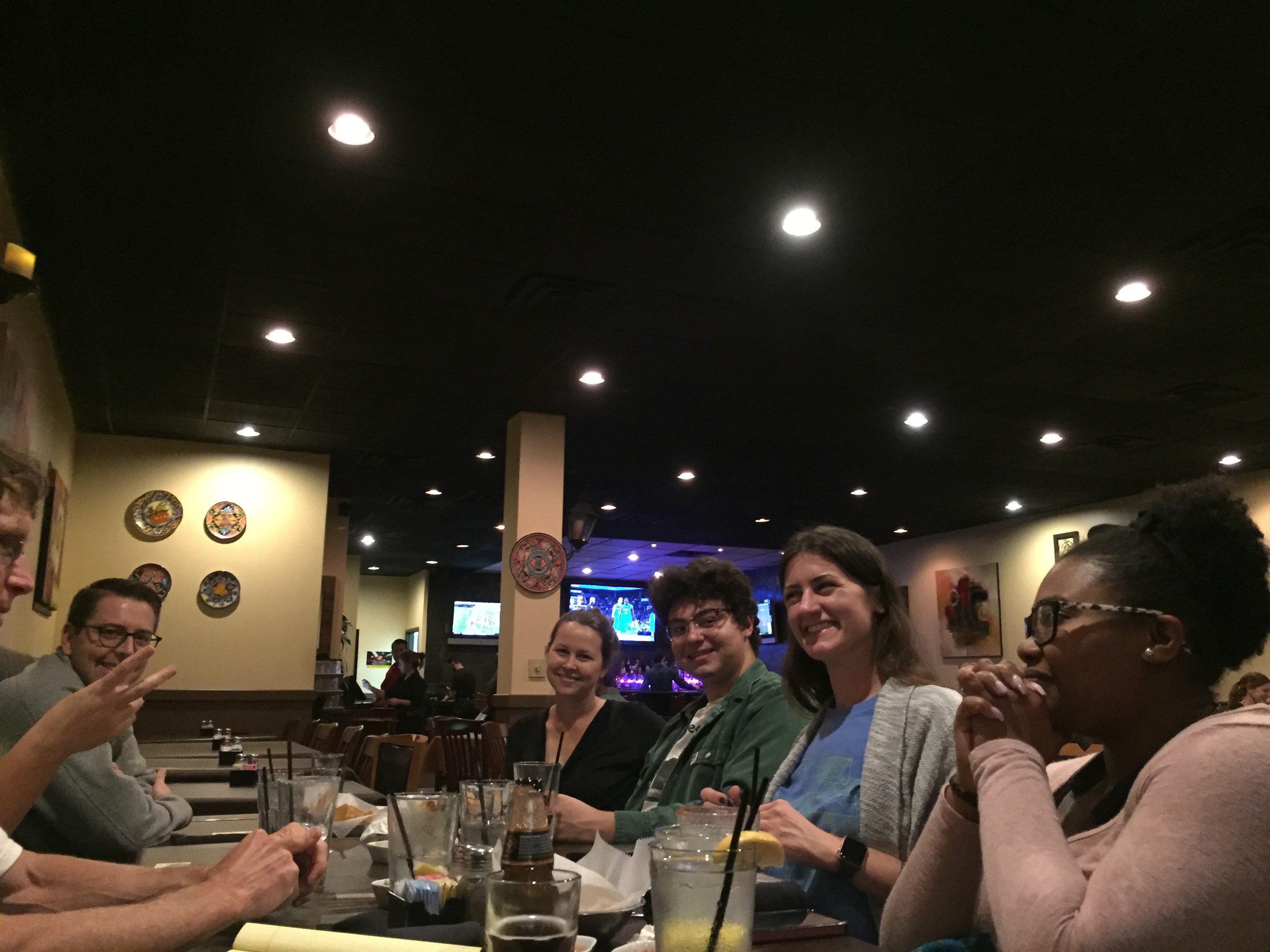
And we’re back to close-to-full board strength, with most of our new members a generation or two younger than the board members they replaced. Twenty somethings are almost in the majority now. We have a board member who was born the same year we were.
In short, Downwinders at Risk as reinvented itself…again.
There’s no better proof of that than what was going on a couple of weekends ago.
In Dallas, the newest members of our board were running the first meeting of our “No Safe Level” Particulate Matter campaign – without Director Jim Schermbeck anywhere in sight.
Meanwhile, in Austin, Associate Program Director Anthony Gonzales was meeting with Libertarian Party officials in an attempt to build a never-before-attempted bi-partisan grassroots alliance to advocate for more “local control” in upcoming Republican Primary races and the 2019 Legislature.
North, in rural Wise County, UNT graduate student Kari Nothiem was working to establish a location for our very own ozone monitor – in the only “non-attainment” county where the state still refuses to monitor for smog. It’s part of a citizens network of new air quality monitors we’re working with UTD and others to establish across North Texas to replace the state’s obsolete system.
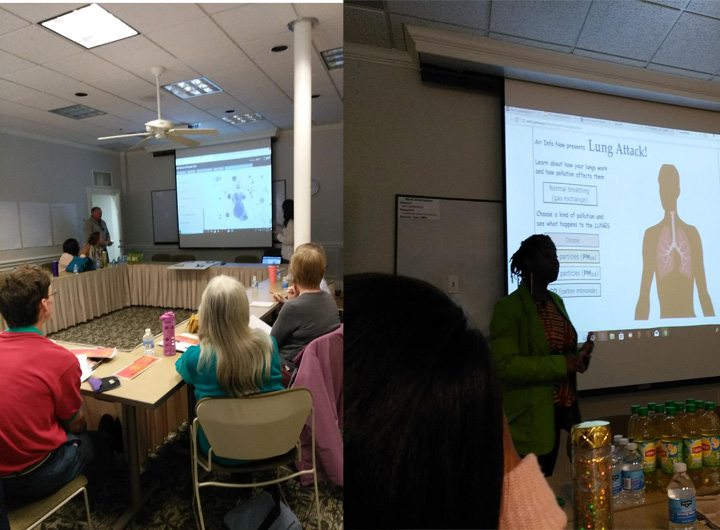
We hope you agree both the geographical and thematic reach of this new Downwinders at Risk is impressive for any group, but especially one that’s entirely dependent on DFW residents and resources. This is our home office. Your neighbors are our board members. This is our only work.
And if you’re reading this, you’re an important reason we’re still here. Even as our mission has broadened and deepened, you’ve been supportive. That’s taken a lot of faith at times. Thank you to each and every board member, volunteer, and contributor.
We started 2017 in suspect shape. We’re ending it with renewed vigor and optimism.
If 2017 was about renewal, 2018 is shaping-up to be a Reveille right out of the gate.
Batch plant permits in Joppa and West Dallas are due to show back up on the Dallas City Council Agenda in January. We’ll be there as part of our campaign to reduce PM pollution and argue that both communities need a bottom-to-top zoning review to better buffer people from pollution.
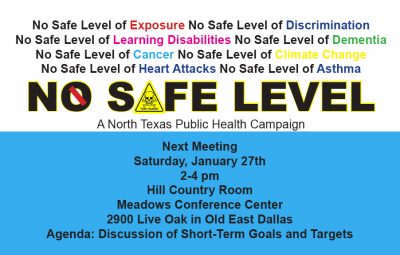
Those fights, plus transit system and school-based initiatives are on the agenda at our next No Safe Level campaign meeting on PM pollution scheduled for Saturday January 27th from 2 to 4 pm at the Meadows Conference Center 2900 Live Oak in Old East Dallas. All are welcome.
It looks like we might have our first vote on a new regional air monitoring network at Dallas Commissioners Court on January 16th – the first step to a truly 21st Century approach directed by local governments.
Later that same day, the 2018 class of our College of Constructive Hell-Raising begins meeting (late-comers still being accepted….)
And if everything goes as planned, we’ll be announcing the creation of a broad left-right coalition working to restore local zoning powers to local governments in Austin sometime next month.

We had a very good Giving Day this year and you may feel as if you’ve paid your clean air resistance dues for 2017. We understand. But if you like the direction the group is going and you want to do some early 2018 voting with your pocketbook, we could sure use the help as our work expands.
Thanks for your continued support and your consideration of a contribution to the cause we’ll try our best to serve for a 23rd consecutive year.
DONATE HERE
Final Grant from Downwinder’s Sue Pope Fund Awarded to Largest Solar Power Project in Central Dallas
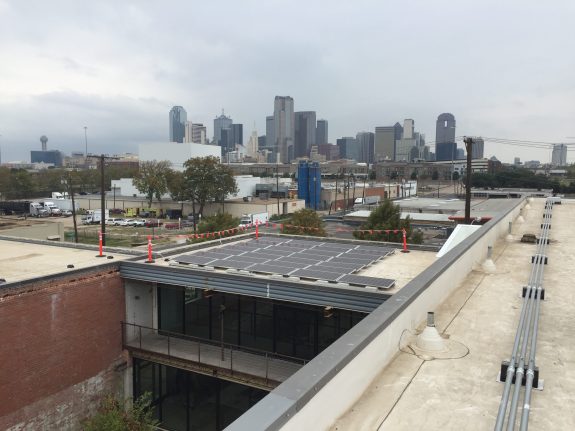
30 of 454 solar panels being installed at Good Work courtesy of the Sue Pope Fund
Administered by the board of Downwinders at Risk, the Fund is named after the group’s founder. In 2006 Sue Pope’s stubborn holdout on a permit renewal at a local cement plant was rewarded with a court settlement including a trust of $2.3 million to finance new North Texas clean air projects. It’s the largest fund of its kind in Texas, and the only one directed entirely by citizens.
Downwinders’ current board recently voted to close-out the Fund by awarding a final grant to just-opened GoodWork in support of its developers’ vision of providing a more sustainable model for local co-working spaces.
Located at 1808 Good-Latimer, near the Farmer’s Market, Good Work is a unique project combining co-working entrepreneurial spirit with green design inside and out. Lead draftsman Gary Opp already had a reputation as one of the Texas’ premiere “green” architects when he took on the task of repurposing a mid-20th Century produce warehouse into a modern office and living space. He’s using the opportunity to build himself a new office, incorporating many elements he’s been offering clients for years.
Co-owner Amy King served with the US Green Building Council in Washington DC and believed Dallas was ready for a co-working space that stressed sustainability. GoodWork is the first LEED Platinum-certified co-working space in North Texas.
Since 2006, the Pope Fund has granted $2 million to 24 clean air projects in North Texas, including purchasing a hybrid School bus for the Midlothian ISD, buying air conditioning for the McKinney Avenue Trolleys so more commuters would ride them in “ozone season,” old for new lawn mower exchanges in Dallas and Plano, the first mass transit in modern Arlington history, energy efficiency upgrades at Fort Worth’s Child Study Center, smart cars for City Hall in Mansfield, and a block of solar-powered homes near Fair Park.
The Pope Fund was the last remnant of a “good neighbor” court settlement negotiated between Downwinders at Risk and Holcim Cement’s Midlothian plant after the facility illegally increased its smog-forming pollution.
Downwinders’ Director Jim Schermbeck said issuing the final grant was a bittersweet finale to an historic chapter in the group’s history. “We’re sad to finally run out of money but glad we could spend it on something so high profile. We’re confident the array will become a signature piece for Good Work and a great advertisement for solar power.”
Still living on the same Midlothian ranch she’s resided on for decades, Sue Pope gave a ringing endorsement to capping off her to her namesake Fund with the Goodwork grant.
“Each day we witness the reasons for which we must change our way of doing things in order to protect our earth. Contributing to GoodWork’s will be very productive for everyone. I already have forty five solar panels on my house roof.”
An Underdog’s Thanksgiving
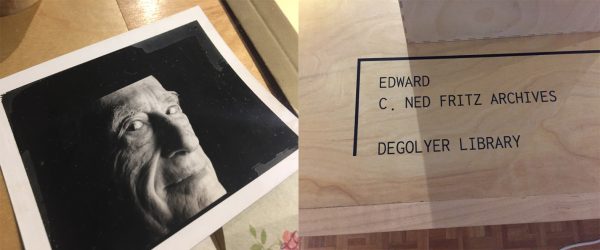
SMU’s conglomeration of millionaire students and multimillion-dollar buildings On The Hilltop might seem an unlikely place for a Thanksgiving tribute to people who steadily worked to undermine some of the more fantastic ambitions of the school’s alumni, and perhaps an even unlikelier place to find solace in their resistance.
But if you’re a DFW resident who’s curious about how the Status Quo can be un-Quoed, you might want to stop by the art gallery inside the SMU Student Union Building to see some ancient artifacts that show how things have changed, or not, since the early 1970’s. And while you’re there you might also want to give thanks to your predecessors, who were no less anguished, isolated, and outspent than you are now.
Entitled “Wide Open,” the gallery’s exhibit itself is meant to connect contemporary artists around the idea of Dallas as a “port city.” It includes everything from landscape-altering prophecies about the worst case climate change scenarios to the injury committed by even the smallest incidental industrial releases we might otherwise never notice. That’s the art. But there’s also the history.
In the middle of the gallery there’s a single big floating table with a host of documents and memorabilia. Collectively they tell the creation story of the modern Dallas-Fort Worth environmental movement. And so much more. They tell you how to make Change happen, how to undo “done deals” and how “small groups of misguided people” bring down the ambitions of local power brokers.
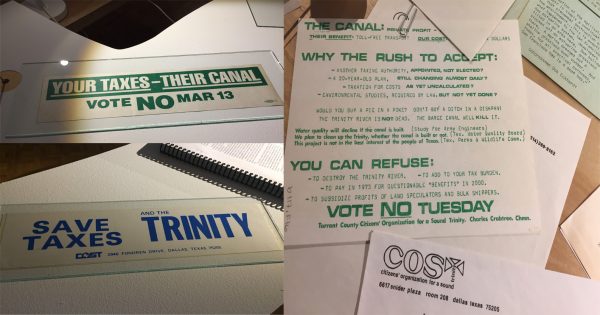
In 1972, the economic engine which the Chambers of Commerce and elected officials agreed could zoom DFW past other growing Sunbelt rivals was …a barge canal from North Texas all the way to the Gulf of Mexico. It was going to be a Lone Star Panama Canal making us a prairie port city.
The canalization of the Trinity River was touted as a state-of-the-art engineering project that would make the region a commercial crossroads. The river already functioned as an open sewer for industries from the Northside slaughterhouses in Fort Worth to the lead smelters in West and South Dallas. The Trinity was smelled more than seen. Cementing its sides and straightening its bends looked like just a formality to the Powers-That-Be.
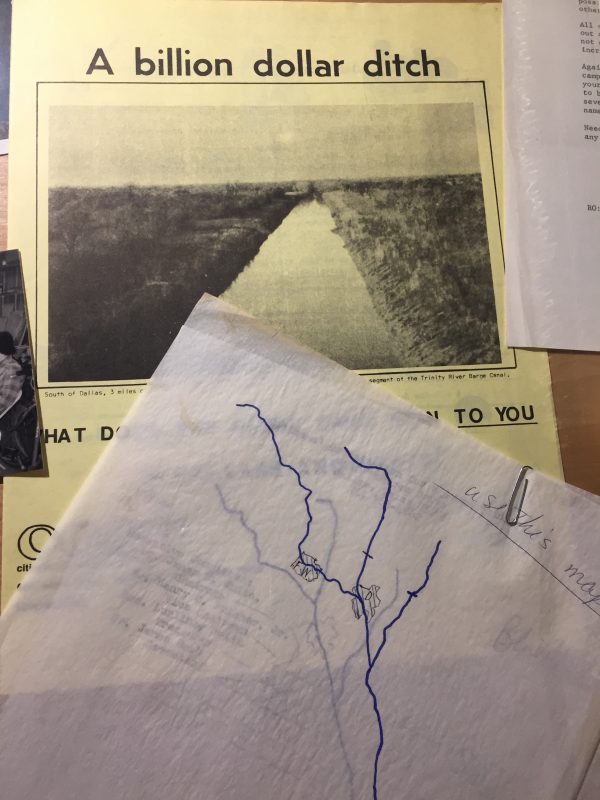
Supporting canalization were Dallas Congressmen Earle Cabell, (Dem), Jim Collins, (Rep) Fort Worth Congressman Jim Wright (Dem), Mid Cities Congressman Dale Milford (Dem), Dallas Mayor Wes Wise, Fort Worth Mayor Sharkey Stovall, and virtually all of the Fort Worth and Dallas downtown business establishment, led by the powerful Citizens Charter Association. You may know this group by its newer name: the Dallas Citizens Council.
Opposing them was birdwatcher and attorney Ned Fritz, and a small circle of citizens. And it’s his official archives at SMU’s Degolyer Library that were raided to populate the gallery table’s displays.
Fritz was Dallas’ original unrepentant treehugger. By the time Trinity River canalization came to a head, he’d already single-handedly stopped the channelization of Bachman Creek, which cut through his property, and successfully defended the wildflowers he grew in his front yard against the City’s attempts to force him to plant St. Augustine like everyone else. He also had a great deal of familiarity with the Trinity River as it ran through southeast Texas’ Big Thicket forest and as early as the mid-1960’s had begun advocating federal protection for this piece of exotic wilderness. He rightly saw the canal as the biggest threat to that goal.
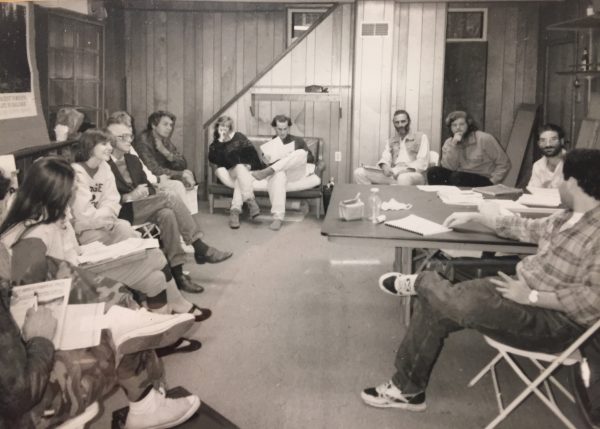
A COST meeting in the basement of Don Smith’s house.
On April 13, 1972, Fritz and a handful of other early canal opponents met at the house of SMU economics professor Don Smith and formed an organization called Citizens Organization for a Sound Trinity (COST). Among them was Henry Fulcher, a Republican businessman and James F. White, a theology professor at SMU, who both thought the canal, now estimated at $1.6 billion and growing, was an extravagant boondoggle. Jim Bush was a Navarro College student who’d grown up camping along the banks of the Trinity and Mary Wright was one of the leading Sierra Club members in Dallas. They both knew canalization would destroy the natural habitat and eco-systems of countless species.
Wright had met Alan Steelman at a Republican Women’s Club gathering in Dallas. A young and hipper Republican, Steelman was seeking the Republican nomination in May to run against much more conservative incumbent Democratic Congressman and avid Canal supporter, Earle Cabell in November (yes, that Earle Cabell).
Wright briefed Steelman about the canal. Steelman listened. During the Republican Primary he wondered aloud whether Dallas needed barge transportation when the massive new regional airport between Dallas and Fort Worth was to begin operation in 1973. Steelman dubbed the project a “billion-dollar ditch.” He won the Republican nomination and headed to a showdown with Cabell.
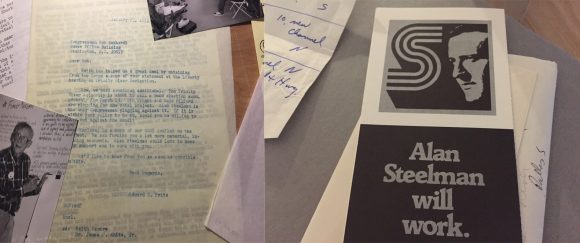
On the left is a plea to Houston area Democratic Congressman Bob Eckhardt from Ned Fritz to come out against the Trinity River Canal to balance support in the DFW delegation – with the notable exception of Alan Steelman. On the right, a piece of Steelman Campaign literature.
Still, it was assumed the canal was a done deal. There were already federal appropriations for it. All the decision-makers were for it.
But in October 1972, at a small hearing of homeowners fighting an Army Corps of Engineers-planned channelization of Garland’s Duck Creek, a local bureaucrat let it slip that there would have to be a local bond issue to provide starter money for the canal. Uncle Sam was requiring the 17 counties along the Trinity River to put up $150 million in seed money.
This was the game changer. It was the first time that citizens in Dallas knew that the project was going to require some money from their pockets.
Then Steelman actually won his race against Cabell in November 1972 with an unexpectedly high 56 per cent of the vote.
This made the Local Establishment very nervous. The Charter Association and Chamber reflexively adopted the paternalistic downtown Dallas approach of not asking too many questions, citing a need to keep up with other cities, and claiming “only extremists would oppose this” great Big Idea.
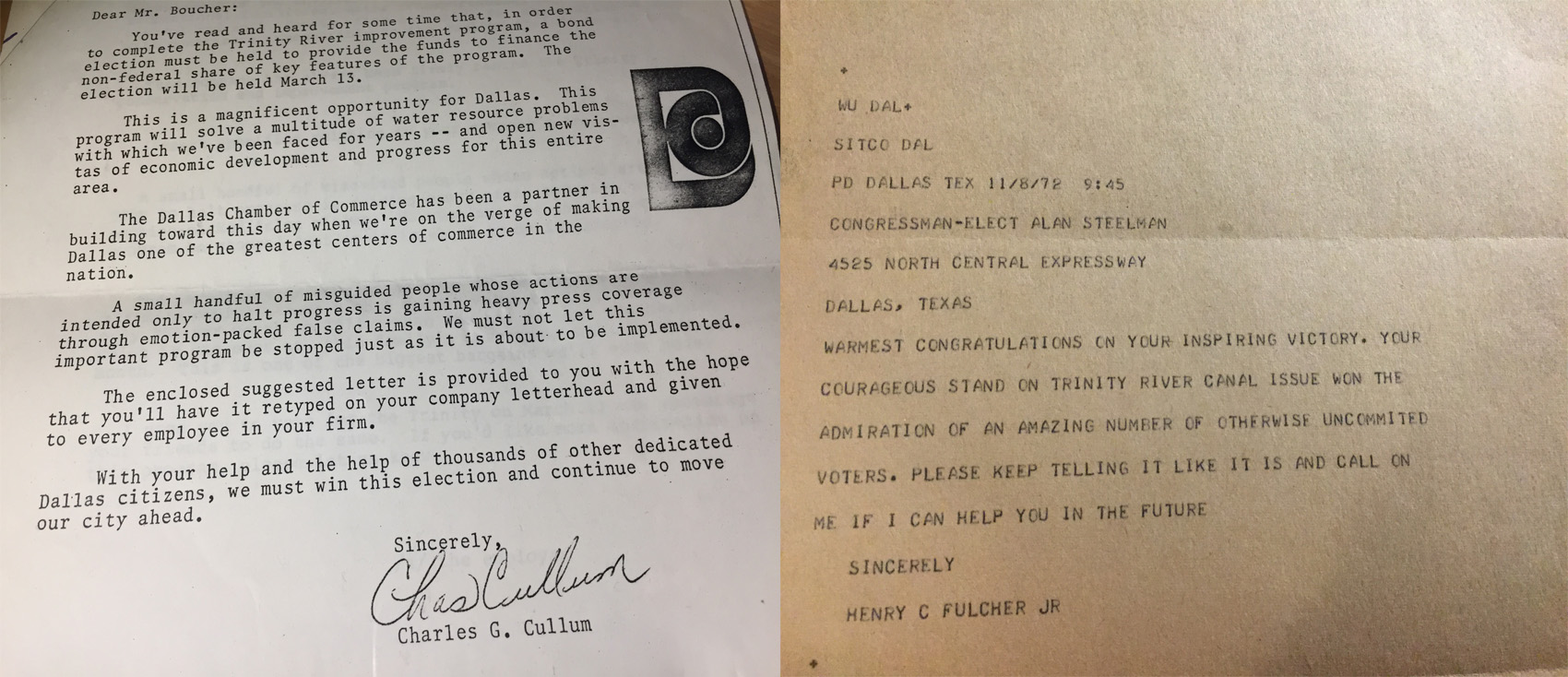
On the left is a letter from Tom Thumb founder and Dallas civic leader Charles Cullum, on behalf of the Dallas Chamber of Commerce, deriding Trinity River canal opponents as a “small group of misguided people”. On the right is a telegram to newly elected Dallas Congressman Alan Steelman from COST president Henry Fulcher congratulating Steelman on his victory over Canal advocate and incumbent congressman Earl Cabell in the Nov 1972 elections.
According to COST veterans, the Chamber’s name-calling “won more active opponents to the canal project every time they uttered it.” Anti-Establishmentarianism was getting local.
Congressional hearings that were considered a technicality before Steelman’s election now became a forum for growing discontent. Ned Fritz had a bigger, more receptive audience for his warnings and he had more allies. New studies confirmed downstream dams would wreak havoc on local species and ecosystems, and flood thousands of acres of hardwood forest. The Environmental Policy Center in Washington called the Trinity River canal project the nation’s “number one boondoggle.” A representative of the Texas Parks and Wildlife Department said the project would cause “wholesale devastation” to the environment.
Canal backers panicked and set the bond vote before they thought opposition could catch fire. Passing up an opportunity to hold it in conjunction with city council elections in Dallas and Fort Worth and several other cities, or when the Dallas school board elections and several smaller city elections would be held, the Powers-That-Be set the vote for a totally different Tuesday in the middle of March. Officials said the election was purposely held separately from any other elections because the Authority felt the people “should not have the issue clouded with any other electoral matters.”
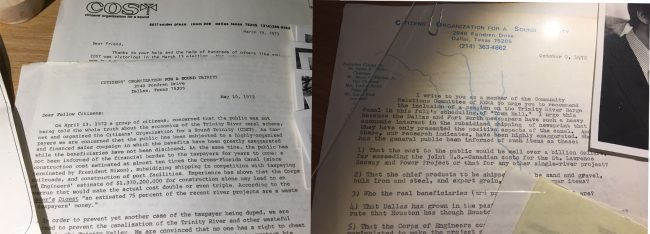
On the left is one of the first notices that opponents to Canalization had formed a group – COST. On the right is a request for local PBS station KERA to host a Town Hall on the Canal issue.
The date conveniently fell two weeks before an environmental impact study on the Trinity project was due to be released by the Corps of Engineers, and a few months before a revised Corps cost study was to be released.
Canal backers assembled an advertising and promotional campaign that would be familiar to anyone who just sat through two decades of Trinity Toll Road salesmanship. Estimated cost? $500,000 – $3 million in 2017 dollars.
COST sprung into action too – with inexpensive radio ads and mailings. Opponents in Dallas and Forth Worth ended up spending a grand total of $22,000. A favorite COST slogan was “Your money, Their canal.”
Opponents figured that if they could get 56 % of the vote in Dallas County and break even in Tarrant County they could afford to lose by big margins in the other 15 down-river counties that had to vote on the project. A majority of all voters and a majority of the 17 counties had to approve the project for it to pass.
The vote turnout was overwhelming—almost twice as large in Dallas as three weeks later for the city council elections. Dallas voted 56 per cent against it, Tarrant County went 54 per cent against it; and opponents got 47 per cent of the vote in the other 15 counties, actually carrying seven of them.
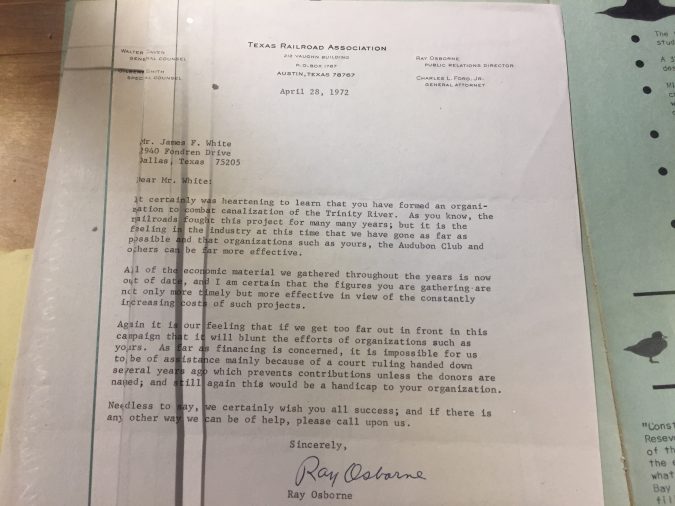
Had Fritz and COST lost that fight, DFW might still be dealing with a host of environmental and social nightmares.
Imagine a second Houston Ship Channel stretching from Hutchins or South Dallas to Fort Worth, lining a concrete ditch with heavy industry on both sides, and anyone who accidentally falls in must be sent to the Emergency Room for a precautionary exam just for coming in contact with the water. Imagine the additional air pollution and risk of exposure to exotic carcinogens for Black and Brown DFW when all kinds of new undesirable industry moves to join the smelters and slaughterhouses in their communities – still doing gangbuster business in the early 70’s. Imagine the Great Trinity Forest as a container port. Imagine no Big Thicket. Imagine the river with no trees, no greenery of any kind, devoid of any natural relationship with the land it runs through. A billion-dollar ditch.
All of that was at stake. A completely different reality. And with only campaign couch money to spend, a small group of committed citizens created a much different future for us in the here and now almost 50 years later. Give Thanks.
And then realize that victory was anything but preordained. It was hard work. It was persistence. It was failure after failure until something stuck to the wall or a lucky break occurred. Letters, telegrams (telegrams!), and fliers on the gallery table offer a recognizable peek into COST’s strategy and tactics for anyone who’s ever taken on City Hall. You see the wheels of a campaign trying to turn and get traction.
Who’s profitable ox would be gored with a canal? Railroads. On the gallery table is a letter from the rail industry agreeing with Fritz that the canal is a bad idea but begging off on coming out in full throat opposition and giving needed money to the cause. A good idea but a dead end. Since all the local DFW Congressmen were for the canal, would Congressman Bob Eckhardt from Houston come out in opposition? He did. Can we get Channel 13 to sponsor a televised Town Hall meeting on the Canal? Yes.
Opposing the canalization of the Trinity River was the work of “environmental extremists” even when you had SMU Seminary faculty, fiscally-conservative Republicans, and George Wallace supporters opposing the same thing. It was having the establishment do every. little. petty. thing. to insure your failure. It was not being certain if you were doing the right thing at the right time or not. It was having no real institutional support or guidance from anywhere, or anyone. It was Do-It-Yourself change-making from scratch.
In other words, it was very similar to now.
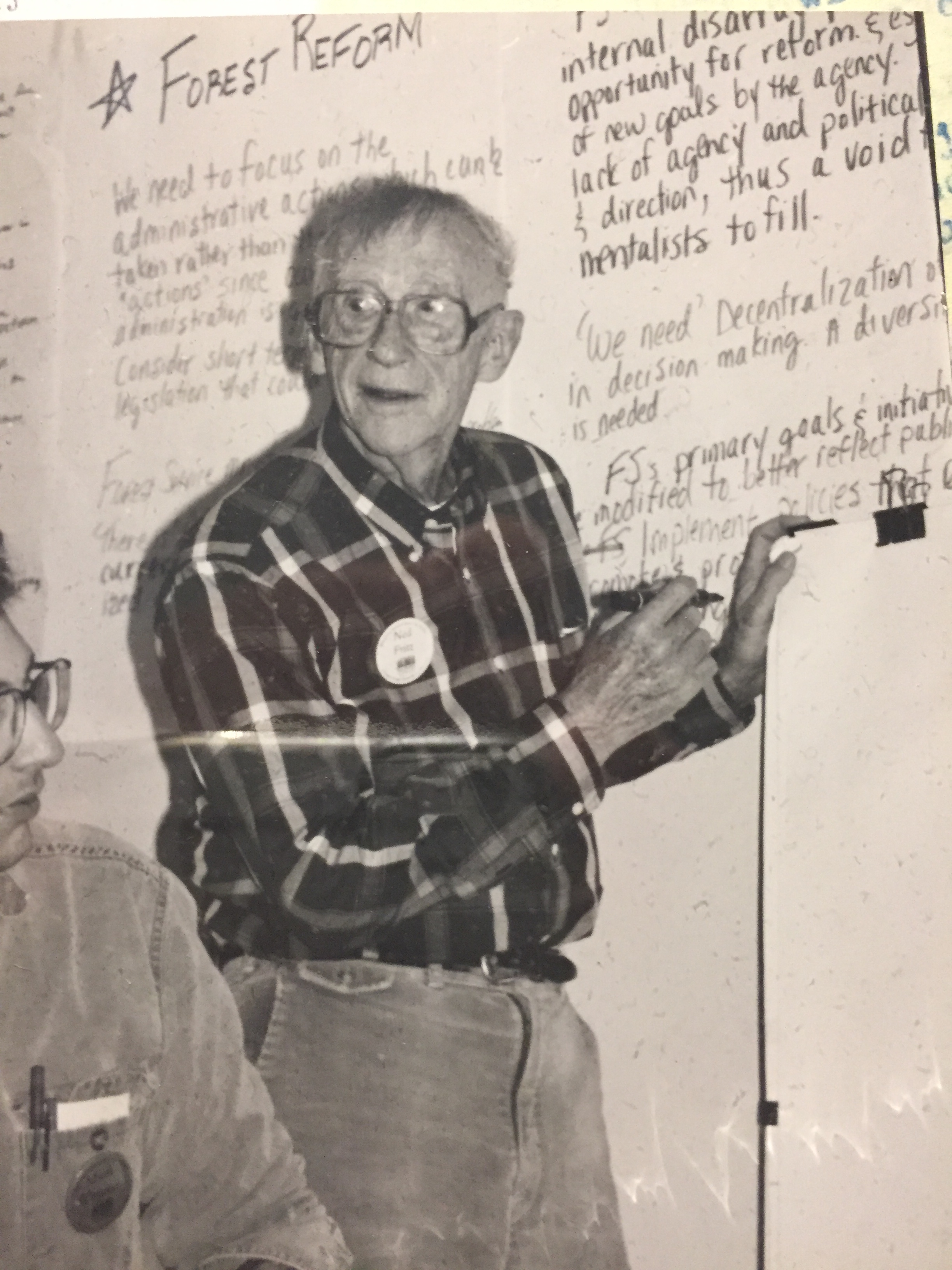
You can’t read the material about the Trinity River Canal at the gallery without seeing The Trinity River Toll Road as a sequel to the story it tells. It’s too easy to substitute Angela Hunt and other battle-tested toll road opponents for Ned Fritz and the canal when reading the business establishment’s knee jerk responses, or scanning the line-ups of the two sides. The names have changed, but the players are still the same. And the battle explored here not only follows the familiar contours of that road fight but any Dallas grassroots vs Establishment fight over the past decades – The Gas Wars, Fair Park, The Lead Smelters, New Freeways in Oak Cliff and South Dallas, etc.
Hunt, and other reliable opponents of newer Dallas Citizen Council Big Ideas like Scott Griggs and Philip Kingston have also been outspent, mocked, and isolated. And they’ve also won. Give Thanks.
Ned Fritz went on to found The League of Conservation Voters and establish what we now revere as The Big Thicket National Forest along with countless other accomplishments before he passed in 2008. He himself is a much-admired and oft-cited reference for many who would have found themselves on the opposite side of an argument with him when he was alive. Being dead tends to make you less threatening to the Status Quo.
Meanwhile the living spiritual descendants of Ned Fritz still remain at large and dangerous in the DFW area. Give Thanks…
…And get thee to SMU’s Temporary Temple of the Underdog before it closes on December 3rd.

